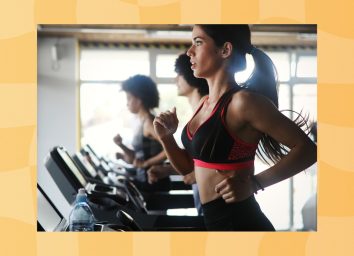Over 50? If You Can Perform These 9 Core Moves, You're in Good Shape
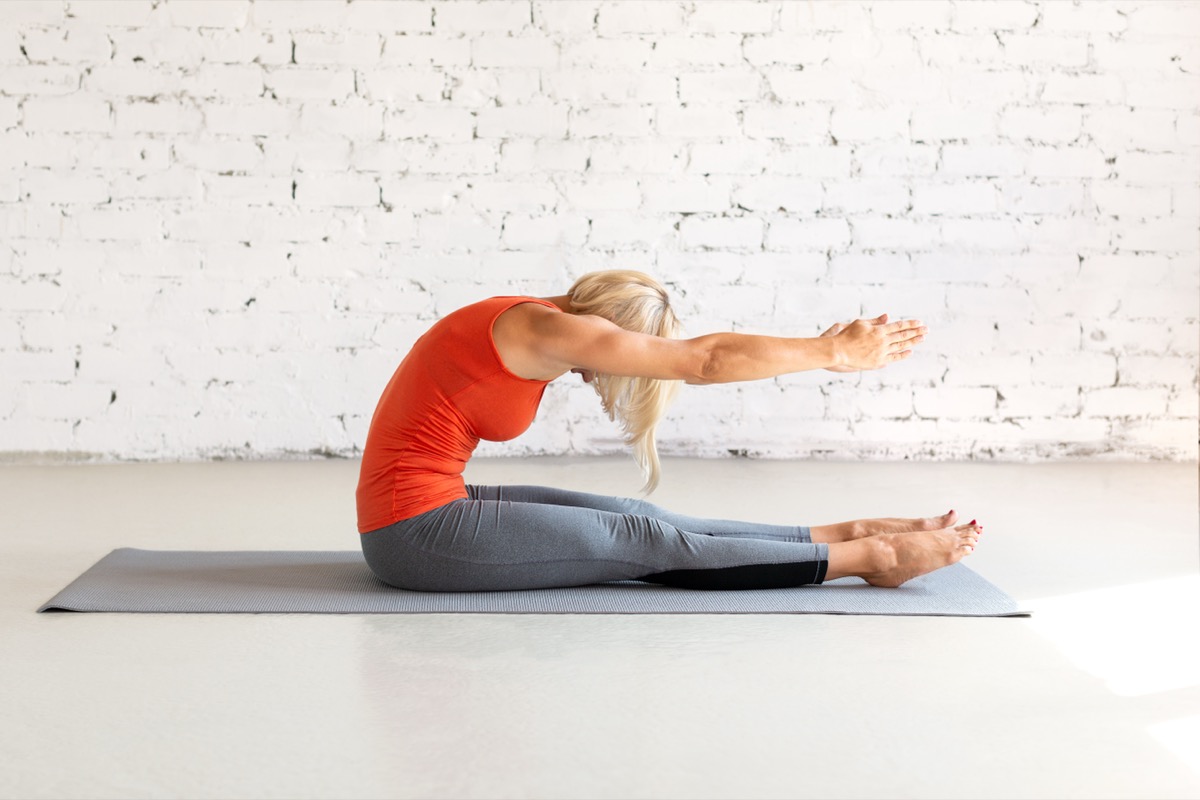
As a Master Pilates Instructor at Club Pilates who has been teaching Pilates for over 15 years, I have helped many clients preserve their mobility and strength by integrating Pilates core exercises into their fitness routines. I have had so many clients tell me that they were able to do what they love longer, whether it be tennis, horseback riding, or cycling because they kept up with a regular Pilates practice over the years. As we age, we begin to feel the effects of the activities that cause wear and tear on our bodies over time. But these effects can be lessened if we continue to work our bodies' stabilizer muscles and keep our larger muscle groups stretched and lengthened with Pilates. My biggest piece of advice to clients who are practicing Pilates in their 50s and beyond is to continue practicing, even for just 20 minutes every few days, to maintain the benefits in their bodies.
Pilates is a practice that incorporates movements that strengthen, mobilize, and balance the whole body. It is a system of exercise that incorporates moving your spine in all directions and promotes core strengthening, emphasizing good posture and alignment. All bodies can benefit from an active Pilates practice, but Pilates is specifically very effective in maintaining strength and flexibility in the body. Pilates exercises can be modified for any injuries and to protect the spine as it ages. It provides the benefits of muscle toning and flexibility through low-impact yet effective movements.
Here are ten core exercises that can be done at home on a mat that are effective examples of the Pilates principles that can benefit clients in their 50s when incorporated into their daily routines.
1. Flat Back Bridge
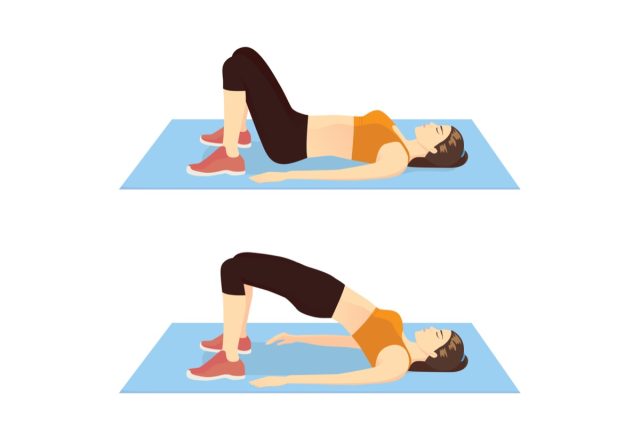
Laying supine on the mat, place your feet at a hip-width distance in parallel, about 8 inches from your sitz bones. Keeping your head down, your neck relaxed, and your palms and feet pressing into the mat begin to lift your hips up, taking care to keep your spine long and neutral as you exhale. Hold at the top of the bridge for an inhale, then lower your spine keeping it in one long line onto the mat as you exhale. Repeat this exercise 4 more times, and make sure to keep the spine flat as you lift and lower your hips.
This exercise strengthens your spinal and posterior chain muscles. It's safe for clients who may have osteopenia or osteoporosis because it is a version of the bridge that does not include articulating or segmenting the spine.
2. Toe Taps
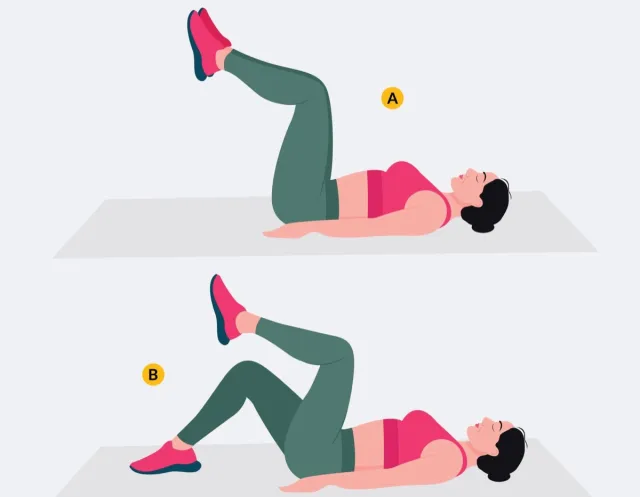
Laying supine on the mat, walk your legs up to the tabletop one at a time, stacking your knees over your hips and lifting your feet off the floor. From this tabletop shape, hinge from your left hip and tap the ground with your toes, keeping a 90-degree bend in the knee. Engaging your core to keep your lower back stable, lift that leg back to the tabletop. Then, repeat on the right side. Continue this movement for a total of ten reps on each side, inhaling to hinge and exhaling to lift.
This exercise requires pelvic stability and strengthens your core without spinal flexion, which makes it a safe exercise for beginners or people with low back issues.
3. Spine Stretch Forward
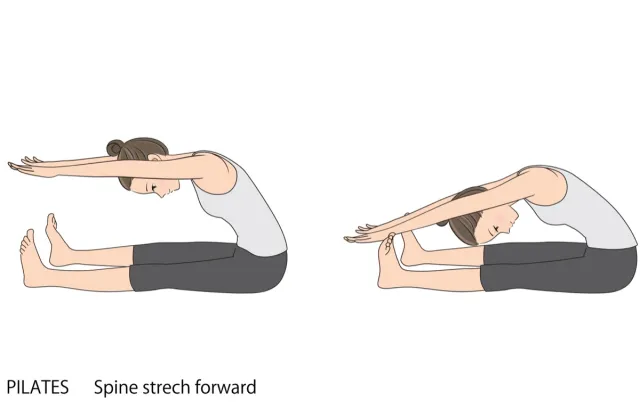
Start seated on the mat, extending your legs long and bringing them out as wide as your mat, flexing your feet, and grounding your heels into the mat. Extend your arms out long and shoulder height, taking care to keep your shoulder blades pulling down your back and not drifting up towards your ears. As you exhale, begin to reach your arms towards your feet, keeping them shoulder height and parallel to the floor, and follow your fingertips with your gaze. Engaging your core as you reach, imagine you are rounding over your legs like you are rounding over a beach ball. Stack the spine as you inhale, sitting tall. Repeat this exercise 4 more times.
This exercise is an example of spinal flexion and strengthens your core muscles while mobilizing your spine. It is a safe exercise for those with any spinal issues because it does not put loaded flexion on your spine.
4. Criss-Cross
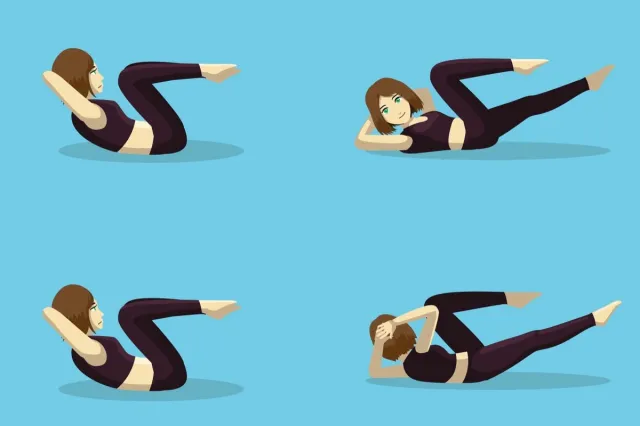
Laying supine on the mat, lift both your legs into a tabletop position. Place your hands behind your head with your elbows in line with your ears. As you exhale, lift your head, neck, and shoulder blades off the mat and rotate from your center to bring your left elbow to your right knee. Inhale back to the center, then exhale to rotate to the other side. If your pelvis can stay stable when you rotate, you can begin to introduce extending the leg you are rotating away from as you twist. Do 10 reps rotating to each side?
This exercise is an example of spinal rotation and strengthens the obliques while stabilizing the pelvis. If spinal flexion or rotation is contraindicated for your spine, modify this exercise by keeping the head down and reaching your straight arm across your body, connecting the elbow to the outside of the opposite knee.
5. Side-lying Clam
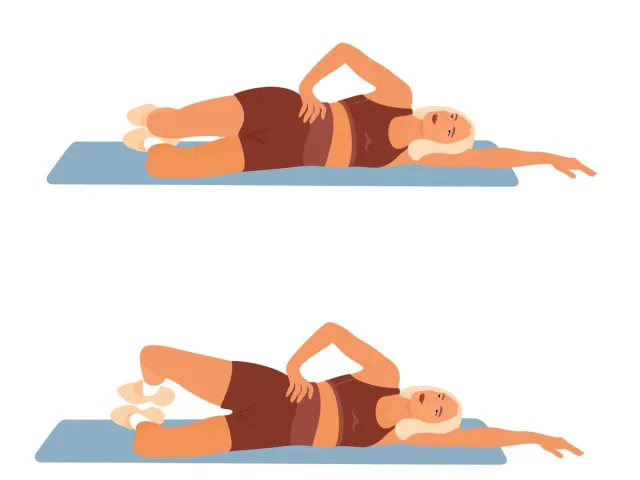
Laying on your left side, bend your knees in front of your hips and bring your heels back in line with your sit bones. Bring your heels side by side to touch and lift your feet up off the mat. Keeping your shoulders and hips stacked and stable, lift your top knee up from your hip as you exhale and lower it back down as you inhale. Repeat 9 more times and then switch sides.
This exercise strengthens the glutes and promotes core stabilization.
6. Mermaid
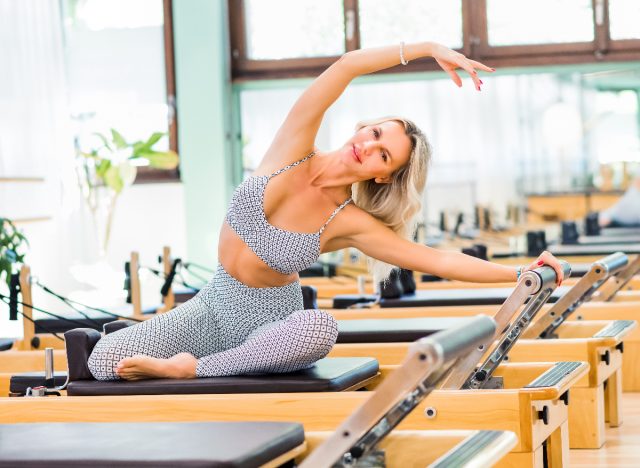
Sit on your left hip with your right leg stacked over your left with both knees bent. Place your left hand on the mat a few inches from your left hip. As you exhale, reach your right arm up and over your head into a side bend, but keep a stacking of your joints as if you were between two panes of glass. Inhale to stack your spine back to tall. Repeat this exercise 4 more times, then switch sides.
This exercise is an example of lateral flexion and stretches the intercostal muscles, obliques, and spine.
7. Swan

Lay prone or flat on your belly on the mat with your feet hip-width distance apart and the tops of your feet parallel and pressing into the mat. Place your hands under your shoulders with your elbows bent back in line with your shoulders. Pressing your pubic bone into the mat to stabilize your lower back and your palms into the mat, inhale and begin to leave your chest off the floor. Initiate this movement from your thoracic spine and gaze forward like you are watching a marble roll off your nose to avoid excessive cervical flexion. Exhale as you melt your chest back down to the mat. Repeat this 4 more times.
This exercise is an example of spinal extension and helps to strengthen the posterior chain muscles and mobilize the spine. If getting down on a mat does not work for your body, this exercise can be done standing, arms out in a goal post shape, hips over heels, while lifting the heart up towards the sky to provide gentle movement to the thoracic spine.
8. Bird Dog
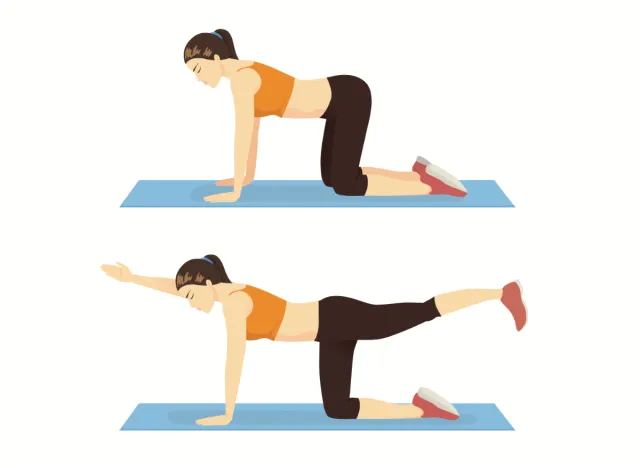
Start in an all fours or quadruped position, hips over knees and shoulders over the wrists. Imagine your abdominal muscles are a corset around your spine, and tighten the corset as you exhale. Keeping the abdominal muscles engaged and the spine stable, begin to lift the left arm off the ground and reach it out straight in front of you. If you can stabilize here you can progress the exercise to have the right leg extended and lifted straight behind the right hip. Hold for 3 breaths, then switch out the extended arm and leg. Repeat this exercise 4 times, or 2 more times on each side.
This exercise is an example of spinal stabilization and core control.
9. Roll-down to Push-up
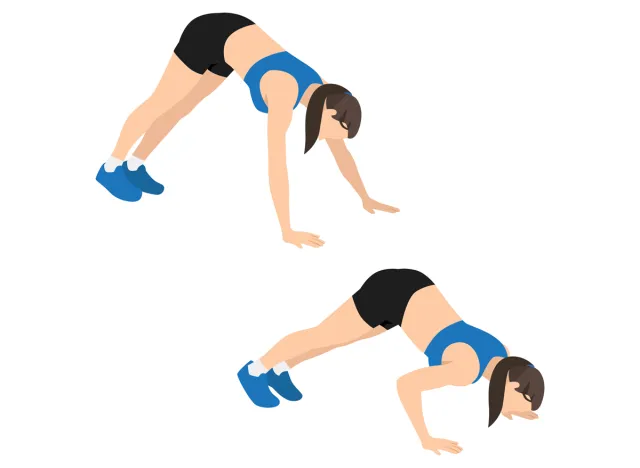
This exercise is an example of two in one! To finish your routine, stand at the back of your mat with your feet hip width distance apart and parallel. As you inhale, reach your arms up towards the sky, as you exhale soften your knees and begin to roll down the length of your spine until your hands reach the mat. Begin to walk your hands away from your feet until you are in a plank shape, then bend your elbows back in line with your shoulders to do a push-up. Straighten your arms to press back to plank, then pike the hips up and begin to walk your hands back to your feet.
You can modify the push-up by dropping the knees to the mat or omit the push up completely and hold a plank for 15 seconds instead. When rolling back up, soften the knees to protect your back and begin to stack your spine back to tall as you exhale. Repeat this 2 more times to complete your practice. Take notice of how tall you are standing and how good your body feels! And if you enjoyed this article, don't miss How Long Your Walking Workout Should Be To Shrink Belly Fat.


